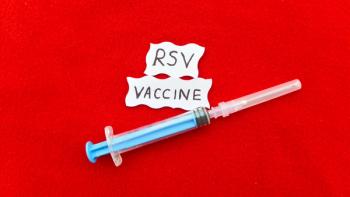
Pharmacy Practice in Focus: Health Systems
- May 2025
- Volume 14
- Issue 3
Advancing Patient Safety: Pharmacist-Led Strategies in Vaccination, Antimicrobial Stewardship, and Nutrient Management
Key Takeaways
- Implementing guidance on antibiotic prophylaxis in IR improved adherence but faced challenges like provider resistance and mislabeling of allergies.
- The HPV vaccine effectively prevents related cancers, though concerns about adverse events persist without supporting causal evidence.
Patient safety and public health remain central concerns across various pharmacy practice areas. In this issue, authors examine the safety profile and public perception of the human papillomavirus (HPV) vaccine, efforts to optimize antibiotic use in interventional radiology (IR), and toxicity risks from fat-soluble vitamins.
In the peer-reviewed original research on page 11, Courtney Jackson, PharmD; Jeremy Frens, PharmD, BCIDP; Austin Paytes, PharmD; and Dylan Suttle, MD, discuss findings from their multicenter, retrospective study evaluating the impact of implementing a guidance document on periprocedural antibiotic prophylaxis for IR procedures at Cone Health. After the health system introduced the guidance, adherence to appropriate antibiotic selection, dosing, and duration significantly improved, especially for procedures such as port placement, transjugular intrahepatic portosystemic shunt, and transarterial radioembolization. The study data also revealed ongoing challenges such as inappropriate antibiotic use for certain procedures, mislabeling regarding allergic reactions, and provider resistance to order set integration. Despite study limitations such as a small sample size and retrospective design, the findings support the effectiveness of standardized antibiotic prophylaxis guidance in IR settings.
In the peer-reviewed literature review on page 16, Caitlyn V. Bradford, PharmD, BCPPS; Li Yu, PharmD candidate; Trey McCollum, PharmD candidate; and Danielle M. Alm, PharmD, BCPS, BCPPS, review current evidence on the benefits, risks, and barriers associated with the HPV vaccine, emphasizing its effectiveness in preventing HPV-related cancers. Despite the vaccine’s strong safety profile and broad public health benefits, concerns persist due to reports of adverse events such as postural orthostatic tachycardia syndrome and premature ovarian failure, which have led to ongoing litigation. However, data from current studies do not support a causal link between the vaccine and these serious conditions.
In the peer-reviewed literature review on page 21, Azhar Hussain, DHA, MBA; Syed Ahsan, DO candidate; and Sidhartha D. Ray, PhD, FACN, explore the functions, dietary sources, and toxicity risks of fat-soluble vitamins A, D, E, and K. Although essential for maintaining immune, neural, cardiovascular, and skeletal health, these vitamins can cause serious adverse effects if consumed in excess—a condition known as hypervitaminosis. The article presents detailed mechanisms of vitamin toxicity, clinical case reports, and biochemical pathways, highlighting the complex balance required to avoid harmful outcomes.
These articles underscore the importance of vigilance, education, and standardization in promoting patient safety. By staying current on emerging evidence and clinical guidelines, pharmacists can help navigate complex issues ranging from vaccine hesitancy to antimicrobial stewardship and nutrient toxicity. Ultimately, these insights empower pharmacy professionals to enhance care quality and protect public health.
Articles in this issue
Newsletter
Stay informed on drug updates, treatment guidelines, and pharmacy practice trends—subscribe to Pharmacy Times for weekly clinical insights.




















































































































































































































